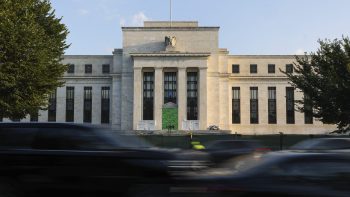Explaining the Fed’s move to buy $600 billion in bonds
JEREMY HOBSON: Now to explain the Fed’s move yesterday and why it’s got all the world’s stock markets jumping let’s turn to John Silvia. He’s the chief economist at Wells Fargo. And he joins us now live from Charlotte, North Carolina. Good morning.
JOHN SILVIA: Good morning Jeremy.
HOBSON: Okay, first of all John. We’ve been over this but it’s complicated stuff. The fed is buying $600 billion in bonds to try to bring down interest rates and boost lending. Explain again what that means and why the central bank is doing it.
SILVIA: It is a bold move. Basically the Fed is buying treasuries, and when they do that they simply put cash into the accounts of the people that they’re buying the treasuries from. That effectively makes more reserves available in the banking system in general. That’s going to lower short term interest rates. That’s going to lower longer term interest rates when they buy the longer term treasuries. That’ll lower mortgage rates, lower small business loan rates, lower commercial paper and bond rates.
HOBSON: And that gets lending going again. Now why are stock markets so happy about that?
SILVIA: Well the Fed’s going for blows. The stock market railing because the Fed says, “We’re not going to deal with before unemployment. We’re going to lower unemployment — we’re going to get the economy going.”
HOBSON: And also, I saw that central banks around the world are a bit uneasy about this new move from the Fed. They’re worried that it may make their own currencies higher against the dollar. What’s that all about?
SILVIA: You got it right Jeremy. Basically we’re supplying more money into the system — more dollars relative to their currency — depreciating the currency go up in value. And remember Jeremy a lot of these countries are export driven, so when their currencies rise it’s going to hit their exports.
HOBSON: John Silvia, chief economist at Wells Fargo. Thanks so much for your time this morning.
SILVIA: Thanks Jeremy.
There’s a lot happening in the world. Through it all, Marketplace is here for you.
You rely on Marketplace to break down the world’s events and tell you how it affects you in a fact-based, approachable way. We rely on your financial support to keep making that possible.
Your donation today powers the independent journalism that you rely on. For just $5/month, you can help sustain Marketplace so we can keep reporting on the things that matter to you.


















